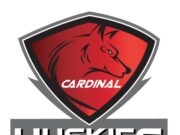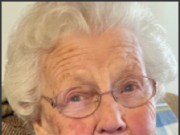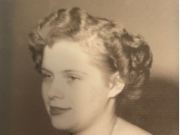Mantua – What? Where is this place? You’re kidding? We have something like this locally? I thought that carvings like this were made somewhere high in the Alps by a group of little, stooped-over, bearded men sitting by a roaring fire as they whittled away on pieces of wood. Big marble statues are done in Italy by guys in togas with leafy bands on their heads, right? They have wood mallets and chisels in hand as they hack away at 6 ft. blocks of stone. And how did the Indians carve those 12 foot totem poles? With flint knives and rocks? Seriously, we have something like that right here in our community? Who knew?
If you are like me, indeed you didn’t know much about this whole woodcarving community that exists across this country, probably across the world. Oh yes, you are familiar with the carvings, or actually carved-like representations of hand carvings, at Walmart, always with a Made In China sticker on the bottom, They sell for $3 to $10, usually in the home furnishings department. Kitsch art, I believe that stuff is called, is usually popped out of a mold in Beijing. The first one probably cost a good buck but the next 6,000 reproductions, well, if we offer them at 49 cents wholesale, the store can charge………who cares. We just made $3,000 and our costs are ridiculously low.
But the real thing—the actual wood carving– you only see these in museums and art galleries. They’re delicate, intricate, and pricey. They take countless hours, hundreds, maybe thousands, to produce. Is produce really the word? A better word is create. Who has the patience to do this kind of work? Admittedly, it is a niche industry, a sub-layer of our society. There are, and always have been groupings of artists and artisans present in every culture dating back to the Neanderthal cave men. How do we know? We find artwork painted on the walls of caves, and carved figurines. Museums are filled with art and carvings representing the human condition throughout the ages. Moving forward to modern times, you encounter duck decoy carvers and fish carvers at most Sportsman’s shows. If you dig into this phenomenon you will find that there is a large subculture of carvers who move within their own arena. Their subject is not just wildlife but any and everything else connoted in the human condition.
If you travel east down Frost Road between SR 43 and Diagonal Road you will notice a peculiar mix of mostly newer houses and an occasional old farm house. As you go east towards Mantua, the older houses and farmsteads become more prevalent, the newer housing much less prominent. At just about the break between Streetsboro and Mantua, is a definitely old homestead farm on the north side of the road. There is a sign out front. It used to say Hardwood lumber for sale. I noticed it several years ago because I work with rough-cut hardwoods making backboards and furniture and such. Somewhere along the line that sign changed and it now says Stadtlander’s Woodcarved Art Gallery. If you drive up the driveway you note a layout typical of an American farmstead of the 1930-60’s era. A beautiful period farmhouse is close to the road. Progressing back you encounter period buildings, including what might have once been a milk house, now labeled Carving School. There are two large barns in back. One obviously houses tractors, pickup trucks and equipment. The other barn which probably once held cattle or livestock, is now filled with stacks of rough-cut lumber, a large horizontal band saw, an industrial planer, a lumber kiln and piles of sawdust. In front of that is what might have been another farm building but now is labeled The Gallery. Make no mistake, this is country. You are undeniably out in the country very much like it might have existed 70 years ago, save for an occasional out- of- time convenience like a modern outdoor wood-burning furnace.
This whole spread is home to Diane Harto and Jim Stadtlander, both renowned wood carvers. Their work has been featured all over the nation, in museums, galleries, and magazines. This is their gallery, their school, their home, their workshop, their lumber preparation machine, and their supply warehouse. Diane takes me on a tour through the farmstead. We start at the gallery, the top of the line, so to speak, where the final products are displayed and sold. Much of it is their own work but also included are works of various students they teach. There is everything from intricate carvings of feathers to rough-hewn carvings of animals made with chainsaws. The contents of this gallery are taken periodically to various venues like the Yankee Peddler festival where artisans gather and the public flocks to see and buy artwork. Diane tells me that the fall leading up to Christmas is the most lucrative season for selling artwork. So they are very busy this time of year.
Both Diane and her husband Jim Stadtlander have over 30 years of experience in wood carving. Jim primarily does commission work while Diane teaches carving. The school has been open for over ten years. There are classes four days per week with about seven students per day. Some classes consist of only women,others are made up of people in their forties, fifties and sixties. There is one lady who is 77. Thursdays have a heavy concentration of men, ranging from a coal miner to a doctor. Some of their students have been coming for over 10 years. Diane also gives seminars. She does some work with children but because of the complexity of the various machines and knives this is limited to a few children that have the aptitude for carving.
Next stop is the wood-preparation barn—sawmill– where logs are sawn into various sized boards for carving purposes. Much of the wood is basswood, locally known as poplar and American tulip. It is the preferred carving wood because of its fine grain and consistency. The boards are stacked up in the kiln, the walls of which telescope out and cover the unit. The wood is then dried for several weeks before it is ready to be planed and cut for carving. Jim used to sell dried hardwoods wholesale, hence my memory of the hardwoods for sale sign but these days there is no time for that sideline.
Across the way from the prep barn is the workshop which houses a large variety of woodworking machines including the usual table saws, band saws, drill presses, planers, and such but also includes specialized computer operated machines that incorporate milling machines, band saws, gouges and rasps and can reproduce patterns in as many boards as you care to feed through them.
We then go over to the school. This is where that which we typically associate with hand carving takes place. There are about 12 work stations which include a machine similar to what most people associate to a Dremel rotary cutter. These are industrial cutters though called Foredom tools that are more substantial. Dental tools and drills are also employed.
There is a dust collection system at each station, and various small hand tools such as Exacto knives, gouges and such. Basically, an idea is mapped out in pencil on a block of wood then, using rotary cutters, rough formed to the eventual desired contour. When that contour is achieved then the student goes to work with the hand tools, the gouges, chisels and knives to produce the details. The feather details on a carved bird may take more than 500 hours to complete. A life-sized bust of a person may take thousands of hours.
For more information on enrolling classes or perusing the gallery you can call: Diane Harto at 330-274-2671 or email jjsdh@roadrunner.com. Visit the Gallery at 2881 Frost Road, Mantua Ohio 44255








